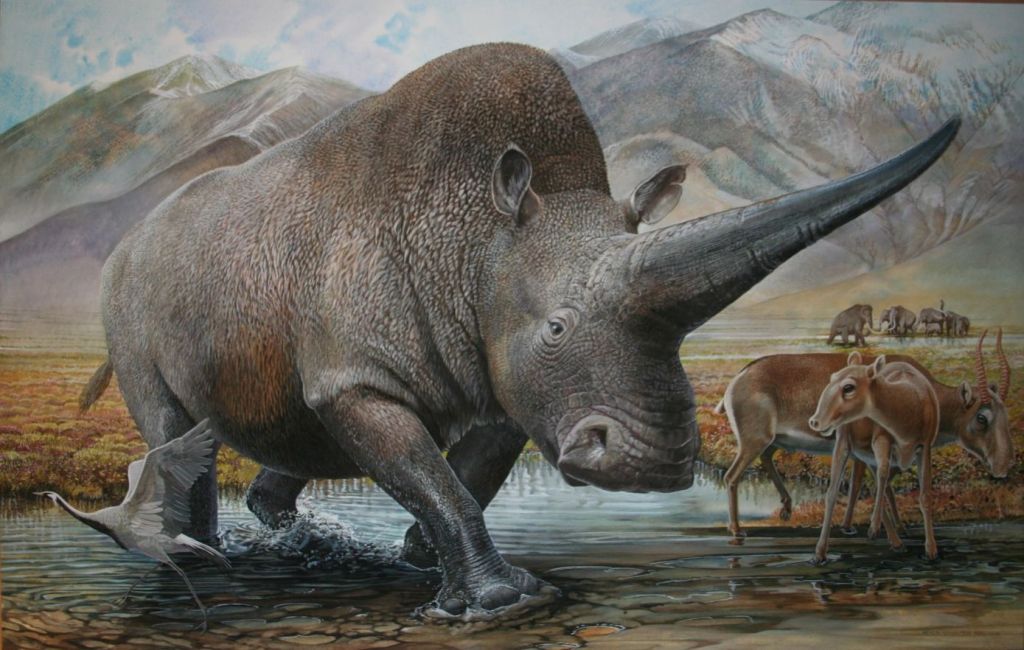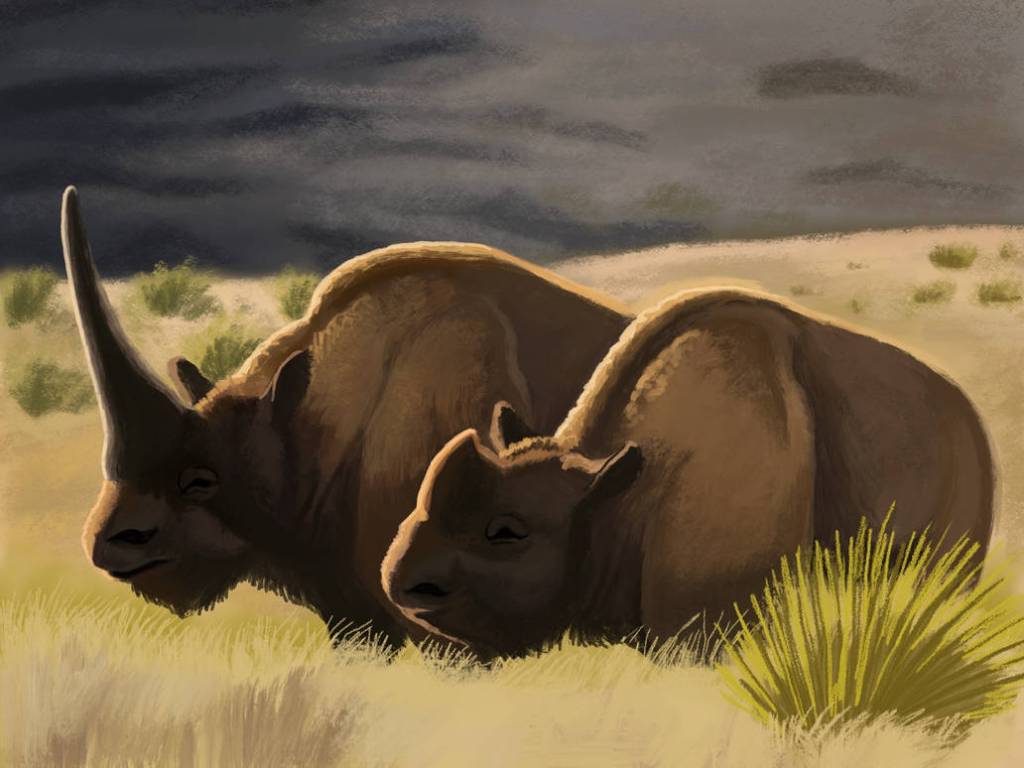The extinct unicorn rhino may be joining its equine counterpart as works of the human imagination.
Long may it rest in peace?
The horn of the ancient rhinoceros Elasmotherium is famous for its colossal size. With estimates ranging anywhere from 1.5 to over 2 meters long, the “Siberian Unicorn” has become famous for sporting one of the largest and most intimidating horns to exist in the animal kingdom. Look for yourself:

The horn is undoubtedly massive – almost too massive. Could it be that the long-held imagery of a gargantuan horn is blown out of proportion? After all, paleontologists have never discovered an Elasmotherium horn, as rhino horns are made of keratin and thus decompose quickly after the animal dies. All estimations have been inferred from the presence of an odd, bony dome on the front of Elasmotherium’s skull, a trait not found in any other rhinos. The dome is quite large and could have supported a massive horn, so it is understandable why paleontologists hypothesized an enormous horn size. But without a fossil horn, they could never really be certain of size.
When a study proposing a reduction to Elasmotherium’s horn size was published in early December, I wasn’t that surprised. What did surprise me was how much the horn had been reduced. Instead of a towering feature, the new Elasmotherium horn is now small and curved, only extending slightly beyond the skull’s dome. Despite its size, the horn could still be used for protection, sexual selection, and to dig up plant tubers. In other words, despite the smaller size, it could still be used in much the same way as extant rhinos.

Why the change? As it turns out, a smaller horn may have served an important function in protecting the dome of the skull. Analysis of the dome has revealed that it may have been fragile and used to enhance Elasmotherium’s sense of smell. If this was the case, the dome may not have been able to support a massive horn to begin with. While a small horn wouldn’t have been as intimidating, it would have acted as good protection for a delicate and important sensory feature of Elasmotherium’s skull.
Even though a horn reduction is probably in order, the proposed horn appearance is far from conclusive. Besides the absence of a fossil horn, the relation of Elasmotherium to modern rhinos makes theorizing its potential appearance very difficult. The lineage of rhinos that includes Elasmotherium diverged from the ancestors of modern rhinos over 35 million years ago, meaning that basing Elasmotherium’s appearance on modern rhinos is foolish and creates results strife with error. Without any living counterparts to compare it to, all estimations of Elasmotherium’s horn are speculative.

There may however be two pieces of evidence that could settle the debate. The first is the potential discovery of Elasmotherium mummies. The melting permafrost of the Siberian tundra has led to the discovery of numerous mummies of ice age animals, including cave bears, wolves, birds, and most notably, mammoths. Mummified remains of another rhino species, the woolly rhino Coelodonta, have helped to clarify its true appearance. With new specimens being discovered frequently, there may still be hope to find a mummified Elasmotherium someday in the future.
The other piece of evidence is cave art left by ancient humans. Paintings made by our ancestors have helped to reveal the appearance of long extinct species, including the colouration of animals like the Irish elk Megaloceros. Cave art of woolly rhinos are known from across European caves, though no depiction of Elasmotherium has been discovered yet. Since Elasmotherium’s distribution only stretched to the eastern reaches of Europe, these depictions may not exist in areas like France where cave art is often found. Having said that, our ancestors did live at the same time and potentially in the same areas as Elasmotherium, meaning that undiscovered art may just exist somewhere.
With Elasmotherium’s horn now being shrunk, the origin of the unicorn myth is now unclear. For decades, it has been assumed that the unicorn myth was based on our ancestors encountering Elasmotherium and being fascinated by the giant horn.
Perhaps paleontologists were inspired by unicorns when interpreting Elasmotherium‘s horn size instead. Wouldn’t that be something?

Works Cited:
I do not take credit for any image found in this article.
Header image courtesy of agustindiazart, found at deviantart here
Classic Elasmotherium courtesy of Peter Schouten, found here
Elasmotherium and a bear courtesy of Joschua Knüppe, found at his twitter here
New Elasmotherium courtesy of Ville Sinkkonen, found here
Kosintsev, Pavel, et al. “Evolution and Extinction of the Giant Rhinoceros Elasmotherium Sibiricum Sheds Light on Late Quaternary Megafaunal Extinctions.” Nature Ecology & Evolution, vol. 3, no. 1, 2018, pp. 31–38., https://doi.org/10.1038/s41559-018-0722-0.
Titov, V.V., et al. “The Experience in Reconstructing of the Head of Elasmotherium (Rhinocerotidae).” Russian Journal of Theriology, vol. 20, no. 2, 2021, pp. 173–182., https://doi.org/10.15298/rusjtheriol.20.2.06.

4 replies on “A Farewell to the Siberian Unicorn? ”
This is a fascinating read. You’ve also chosen really good pictures.
LikeLiked by 1 person
It is very informative
LikeLike
[…] I hope you enjoyed this article! If you want to know more about some Ice Age animals, then I recommend you read about the Siberian Unicorn, an ancient rhinoceros, here at Max’s Blogosaurus! […]
LikeLike
[…] Грузный эласмотерий, разгуливающий по мелководью, — это могло быть вполне обычное зрелище в степных районах плейстоценовой Евразии. Рисунок © Peter Schouten с сайта maxs-blogo-saurus.com […]
LikeLike